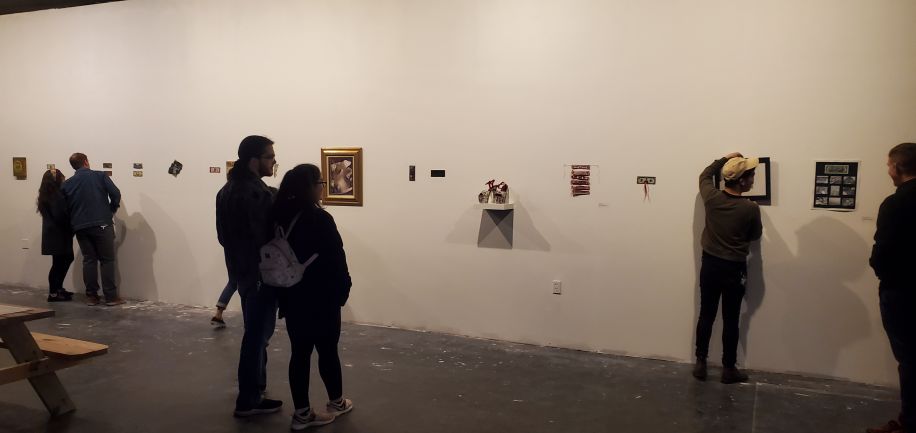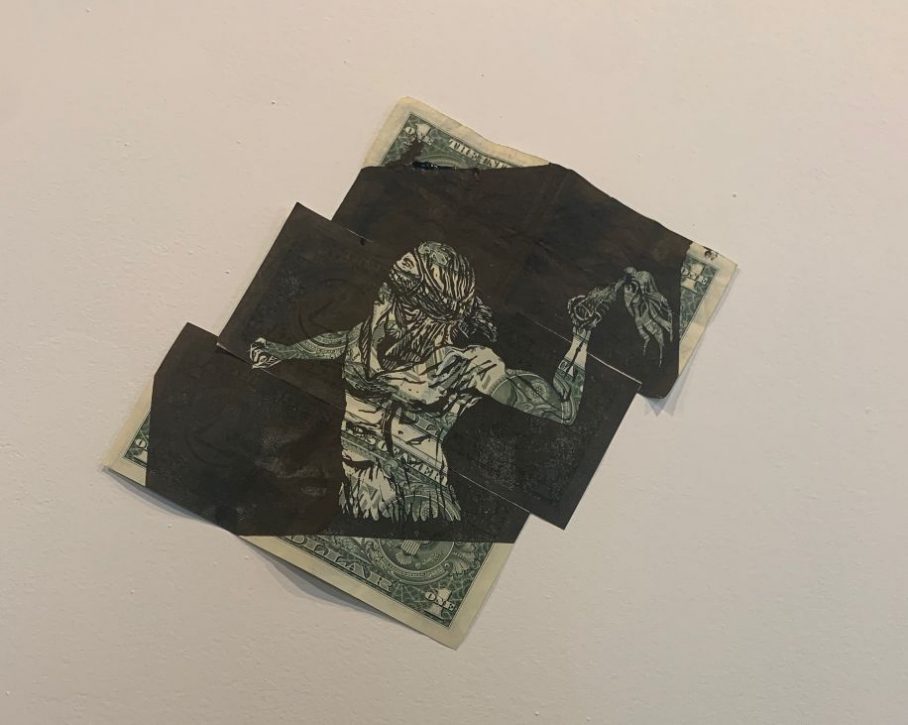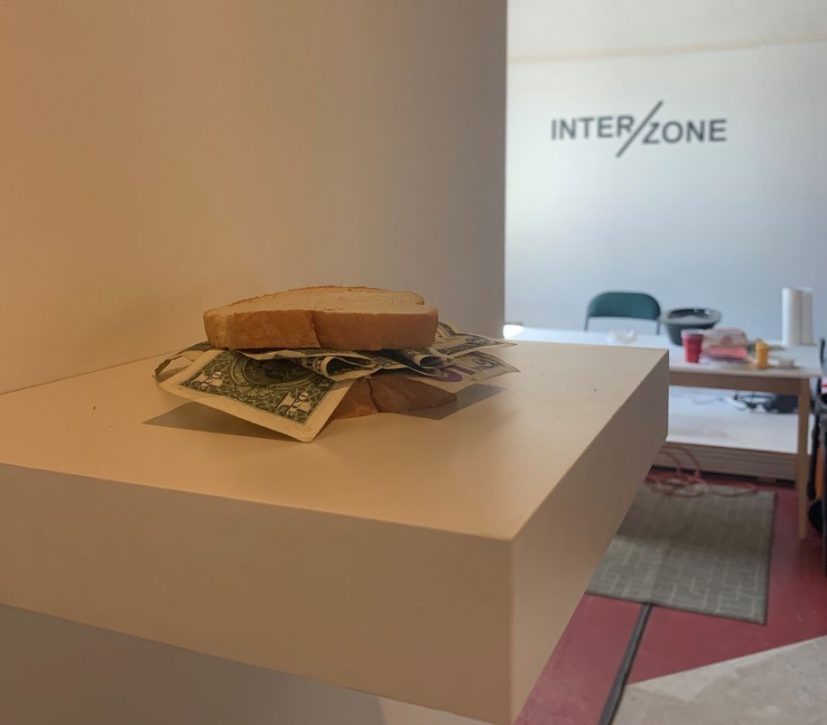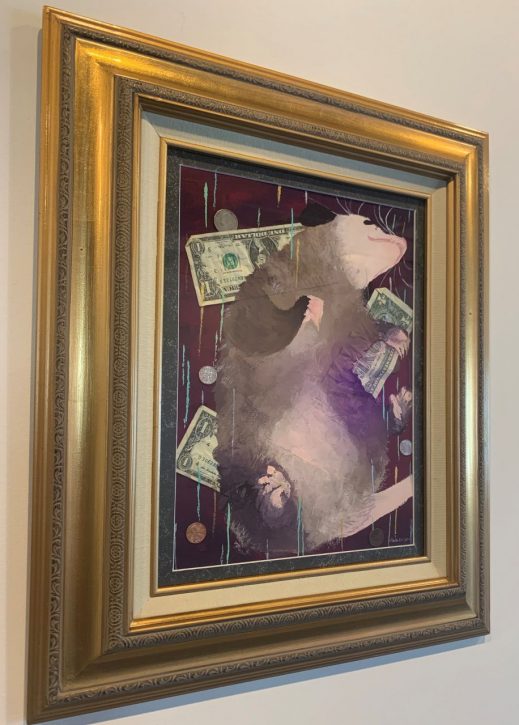By: Dakota Parks
Tucked into the historic Brownsville neighborhood on North V Street, the building that houses Interzone Art Center dates back to 1955. Over the years, the nearly 3,000 sq. ft. building has housed a variety of people: the Brownsville Post Office, a hardware store, a pharmacy, a digital media education school, a seafood restaurant—and now an art center. Six months ago, a fluctuating group of Pensacola artists set out to construct an “artist-run space.” Artist-run spaces are facilities operated by artists instead of private owners or local governments. These spaces give artists the freedom of curating their own exhibits, hosting experimental events and collaborating as a group for programming.

Local artist and figurehead for Interzone, Matt Pham, has wanted to open a community art space in Pensacola for the last ten years. Pham has worked as a freelance graphic designer, a talent booker for Sluggo’s and the art director/marketing coordinator at the Pensacola Museum of Art. His artist medium gravitates towards social practice art—art that engages human interaction and social discourse.
“This space is really a response to a need that we have felt in the community. This isn’t a business, so we don’t have employees or anyone getting paid. Everything being done here is based on volunteerism,” said Pham. “My name might be on the lease, but I couldn’t have done this without my friends and the art community. It’s been about 20 or 25 people of all ages and aspects of life in and out helping. The priority for us is making space for artists, and that extends to performances, musicians, classes and workshops—anything people want to do to share their work.”

Space, as Pham explained, isn’t cheap though. Interzone went through six months of constructions and bills still have to be paid to keep the community space afloat. Money is a stressful subject for the artists involved in the project. While Interzone is staying afloat through the resident artist rental workspace in the back half of the building, donations at events and a soon-to-be artist cooperative, they are still actively crowdfunding. One of the first exhibits in the space, “Legal Tender” was created in juxtaposition to this anxiety about money.
“So much of the art that we make is about the current moment in the artist’s lives: what is taking up the most of their energy, time and brain space. For me, it’s been money. I feel like I’ve been jolting up in the middle of the night and yelling, ‘money!’ I really just wanted to take the anxiety out of it for a moment and turn it into an object that we could play with and make art with” said Pham.

“If you look historically at art spaces, artists find these buildings that have cheap rent because that’s all they can afford. We have to understand the logistics of a group of white artists moving into Brownsville, which is disproportionately a black neighborhood,” explained Pham. “This is a neighborhood building—we can’t separate ourselves from these houses; they’re in the DNA and history of this space. It also tends to be a trend that when artists get together to create these spaces, they tend to be white artists. Deciding to be an artist is a privileged decision—spending that much money on a career where you will make no money— some people just can’t take that risk. We have this presumption that everyone values art, and that there needs to be space and money spent on art, but that’s not true. That’s also privileged thinking.”

While the word “gentrification” floats around the air, the artists working on the project are doing everything they can to make the art center reflect the entire community—not just white artists. Family homes surround the art center building, and people from the neighborhood have interacted with the space by coming to talk to artists, hanging out and seeing the artwork. Others in the neighborhood have voiced their concerns that no one should ever charge money to see art—hence the decision to take donations at events rather than charge admission and keep those that can’t afford it out of the space. As the space continues to evolve, it will evolve with the needs of the community.
So far, Interzone has hosted a pop-up show with their resident artists, put out a call for works for the “Legal Tender” show and even hosted a dance party. For the future, they’re already working with theatre production companies and film festivals for renting out the space. They’re continuing to generate ideas for several upcoming exhibits and shows. Pham explained that there are so many ways the community can get involved with Interzone: come to the events, donate if you can, check out the GoFundMe, come volunteer on the weekend, and if you’re an artist, respond to calls for work and put your art on display.
“We really want to be a general use art space. If anyone in the area has had an idea that was too big, or they didn’t have the opportunity, space, or time to do it, we’d be more than welcoming to host them—whether that’s through collaboration or space rental. Everyone deserves a space to feel comfortable, show what they create and just be who they are,” said Pham.
To keep up with Interzone and their upcoming events, follow @interzone.pensacola on Instagram and Interzone Pensacola on Facebook. Check out their GoFundMe: www.gofundme.com/f/interzone-pensacola-art-space. If interested in getting involved hands-on, contact them about volunteering on the weekends.